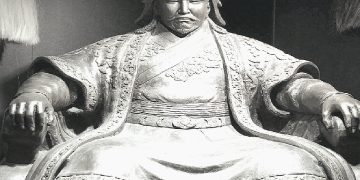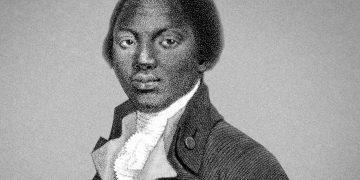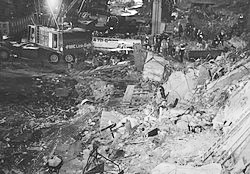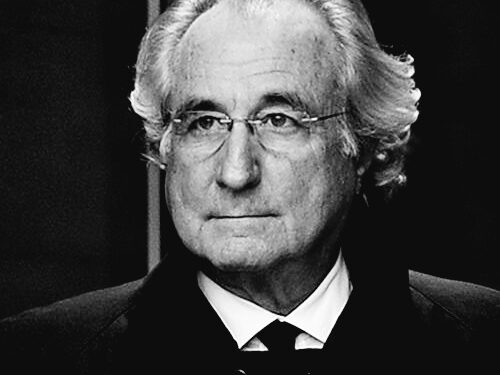Bernard Madoff: The Architect of the Largest Ponzi Scheme in History.
Bernard Madoff, an American financier and former chairman of NASDAQ, is best known for orchestrating one of the most infamous Ponzi schemes in history. His fraudulent activities not only defrauded thousands of investors but also shook the foundations of financial markets and raised serious questions about regulatory oversight. You may also like
Early Life and Career
Born on April 29, 1938, in New York City, Bernard Madoff grew up in a modest Jewish family in Queens. He attended the University of Alabama, where he studied political science before transferring to Hofstra University, where he graduated with a degree in finance. Madoff began his career in 1960, founding Bernard L. Madoff Investment Securities LLC. Initially, he gained a reputation for innovation in trading technology, particularly for developing one of the first electronic trading systems.
Rise to Prominence
Madoff’s firm grew rapidly, and he became known for offering consistent, high returns that attracted a prestigious clientele, including wealthy individuals, charities, and hedge funds. His reputation as a savvy investor allowed him to cultivate relationships with many prominent figures on Wall Street. Madoff’s investment strategy was shrouded in secrecy, further enticing investors who were eager to participate in his seemingly lucrative opportunities.
The Ponzi Scheme
The cracks in Madoff’s empire began to show as the 2008 financial crisis unfolded. As investors rushed to withdraw their funds amid market turmoil, Madoff could no longer sustain the illusion of profitability. It was revealed that Madoff had been operating a classic Ponzi scheme, using the influx of new investors’ money to pay returns to earlier investors, rather than generating legitimate profits through investments.
In December 2008, Madoff was arrested and charged with securities fraud. Investigators soon discovered that he had defrauded investors of an estimated $65 billion, making it one of the largest financial frauds in history. The fallout was devastating, affecting thousands of individuals, families, and charitable organizations that had entrusted their life savings to him.
Legal Consequences
In March 2009, Madoff pleaded guilty to 11 felony counts, including securities fraud, investment advisor fraud, and money laundering. He was sentenced to 150 years in prison, a sentence that underscored the severity of his crimes and the massive impact on his victims. Madoff’s case raised important discussions about the need for regulatory reform in the financial industry, highlighting how his fraudulent activities went undetected for years.
Legacy and Impact
Bernard Madoff actions had far-reaching consequences, not only for his victims but also for the financial industry as a whole. The scandal prompted a reevaluation of how securities were regulated and led to significant changes in oversight practices. The Securities and Exchange Commission (SEC) faced intense scrutiny for its failure to uncover Madoff’s scheme despite several warnings and red flags over the years.
In addition, the case highlighted the dangers of greed and the importance of due diligence in investing. Many investors learned painful lessons about the necessity of skepticism and the risks associated with too-good-to-be-true returns.
Here’s a more in-depth look at various aspects of Bernard Madoff’s life, the mechanics of his Ponzi scheme, the aftermath, and the broader implications of his actions.
The Mechanics of Bernard Madoff Scheme
Madoff’s investment strategy was deceptively simple, involving a consistent pattern of returns that he claimed were generated through a proprietary trading strategy. He promised investors steady and attractive returns, even during market downturns, which helped build trust and attract a growing client base.
1. Consistent Returns: Bernard Madoff often reported returns of around 10-12% annually, regardless of market conditions. This consistency was one of the factors that drew in investors, as many were looking for stable investment options. Start your fitness journey today!
2. Lack of Transparency: Madoff’s firm was secretive about its investment strategies. Many investors were kept in the dark about how their money was being managed, with Madoff providing vague explanations about his trading methods.
3. Feeding the Scheme: New investments were crucial for Madoff to keep the scheme afloat. When investors wanted to cash out, Madoff used funds from new investors to pay them, creating the illusion of a profitable operation. This cycle could continue as long as new investors kept entering the scheme.
The Collapse
The financial crisis of 2008 was the tipping point for Madoff’s scheme. As the market crashed, many investors sought to withdraw their funds, leading to a liquidity crisis. Madoff was unable to meet the withdrawal demands, and on December 10, 2008, he confessed to his sons that the investment firm was a fraud. They reported him to the authorities, leading to his arrest.
Victims and Impact
Bernard Madoff fraud had a devastating impact on a wide range of victims:
Individual Investors: Many families lost their life savings, with some left homeless or in severe financial distress. The emotional toll on victims was profound, as they grappled with the betrayal and loss.
Charities and Foundations: Numerous charitable organizations that had invested with Madoff suffered significant financial losses, leading to reductions in services and programs they provided to the community. join our tech community and be part or the digital revolution!
Financial Institutions: Some hedge funds and banks that had invested in Bernard Madoff fund faced severe damage to their reputations and financial positions.
Legal and Regulatory Fallout
In response to Madoff’s fraud, there were significant legal and regulatory repercussions:
1. SEC Reforms: The U.S. Securities and Exchange Commission (SEC) faced criticism for its failure to detect Madoff’s scheme. As a result, the SEC implemented reforms aimed at improving oversight and investor protection, including enhanced whistleblower programs and increased scrutiny of investment advisors.
2. Clawback Lawsuits: Efforts were made to recover funds from those who had profited from Madoff’s scheme. The trustee appointed to recover money for victims initiated clawback lawsuits against investors who had withdrawn funds before the collapse.
3. Victim Compensation: A fund was established to compensate Madoff’s victims, with the goal of recovering some of the lost investments. The process of compensation was complex and lengthy, and many victims received only a fraction of their initial investments.
Cultural and Media Representation
Bernard Madoff story has been the subject of numerous documentaries, films, and books, reflecting the public’s fascination with his rise and fall. His life has been depicted in:
Documentaries: Films like “Inside the Madoff Ponzi Scheme” and “Madoff: The Monster of Wall Street” explore the details of his fraudulent activities and the impact on victims.
Dramatizations: HBO produced a miniseries titled “The Wizard of Lies,” starring Robert De Niro as Madoff, which dramatizes his life and the fallout from his actions.
Bernard Madoff legacy is a complex mix of cautionary tales about greed, deception, and the need for transparency in financial dealings. His actions serve as a stark reminder of the potential for fraud in the financial system and the importance of vigilance on the part of investors and regulators alike. The enduring impact of his scheme continues to shape discussions about ethical practices in finance and the protection of investors.
Bernard Madoff story serves as a cautionary tale about the complexities of trust in the financial world. His legacy is a stark reminder of the potential for fraud within seemingly reputable institutions and the devastating consequences it can have on individuals and the economy. Madoff passed away in April 2021 while serving his sentence, leaving behind a legacy marked by betrayal and loss.












